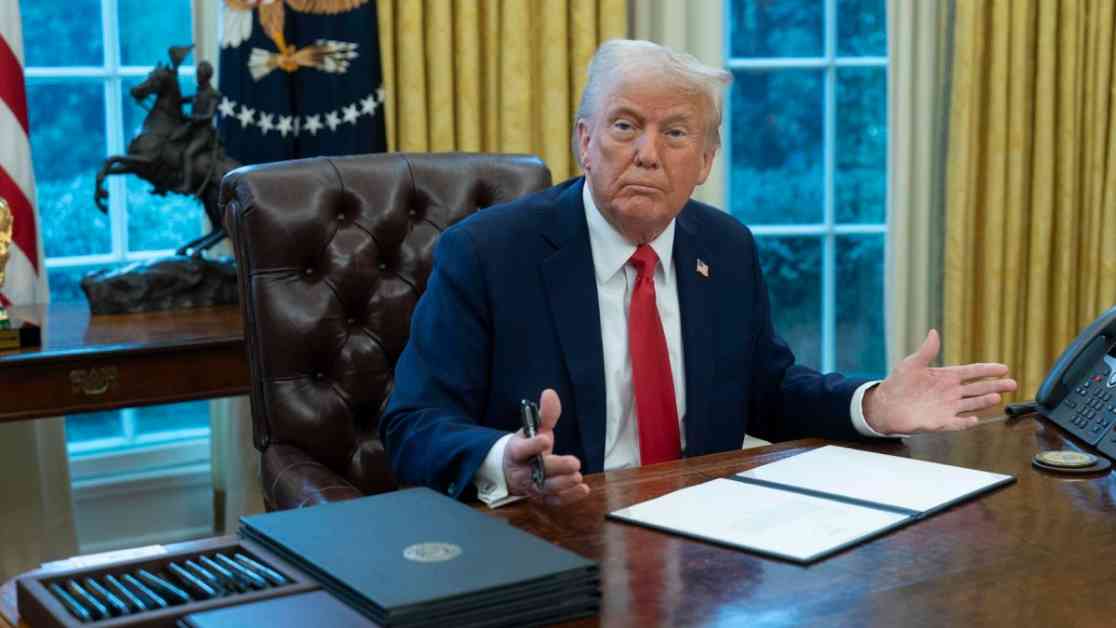President Donald Trump made a significant decision regarding tariffs on Monday, granting Canada and Mexico a temporary pause. This move marked a crucial shift in the looming trade tensions, as tariffs on China were still set to take effect early Tuesday. The last-minute reprieve for Canada and Mexico raised eyebrows not just on Wall Street but also among experts and the general public, setting the stage for what could be a tumultuous period ahead.
Transportation expert and DePaul University professor Joe Schwieterman, a seasoned observer of industry trends, expressed his astonishment at the sudden turn of events. “I’ve been watching transportation all my life, and I don’t recall a situation like this…where suddenly all the rules change about manufacturing, production could change in an instant,” he remarked. The sense of panic and uncertainty was palpable in the air as the world braced for potential economic repercussions.
Mexico’s President Claudia Sheinbaum made strategic concessions along the border, pledging to deploy 10,000 soldiers permanently to address drug trafficking, particularly the influx of fentanyl. Meanwhile, Canadian Prime Minister Justin Trudeau announced plans to bolster border security with an infusion of $1.3 billion and the addition of 10,000 frontline personnel. These measures underscored the seriousness of the situation and the urgent need for decisive action in response to the evolving trade landscape.
Despite the temporary relief for Canada and Mexico, the specter of impending tariffs on Chinese goods loomed large. Experts warned that the ripple effects of these tariffs could have a direct impact on consumers. “Definitely be affected almost immediately on higher price of goods for everything,” cautioned Professor Schwieterman. The repercussions of such tariffs would reverberate across various sectors, disrupting supply chains and potentially driving up prices for everyday items.
Tariffs, a longstanding practice in international trade, are collected by U.S. Customs on a wide range of products, from cars to electronics to avocados. The United States relies heavily on imports from Canada and Mexico, with four million barrels of Canadian oil entering the country daily. The National Association of Home Builders highlighted the significance of these trade relationships, noting that over 70% of the imports crucial to its members, such as lumber and plywood, originate from Canada and Mexico.
In the heart of Chinatown, shoppers braced themselves for the impact of escalating tariffs. Xavier Richards, a local resident, expressed his support for businesses from Canada, Mexico, and China in light of the uncertain economic climate. The prevailing sense of unease and unpredictability underscored the challenges faced by consumers and businesses alike in navigating the shifting trade landscape.
As the dust settled on the latest developments, Professor Schwieterman emphasized that the tariff saga was far from over. “We have several more chapters that are gonna happen before this settles down,” he predicted. The complex interplay of economic interests, political negotiations, and global dynamics painted a picture of ongoing uncertainty and volatility in the realm of international trade. The coming days and weeks would undoubtedly bring further twists and turns, reshaping the economic landscape and testing the resilience of nations and individuals alike.












